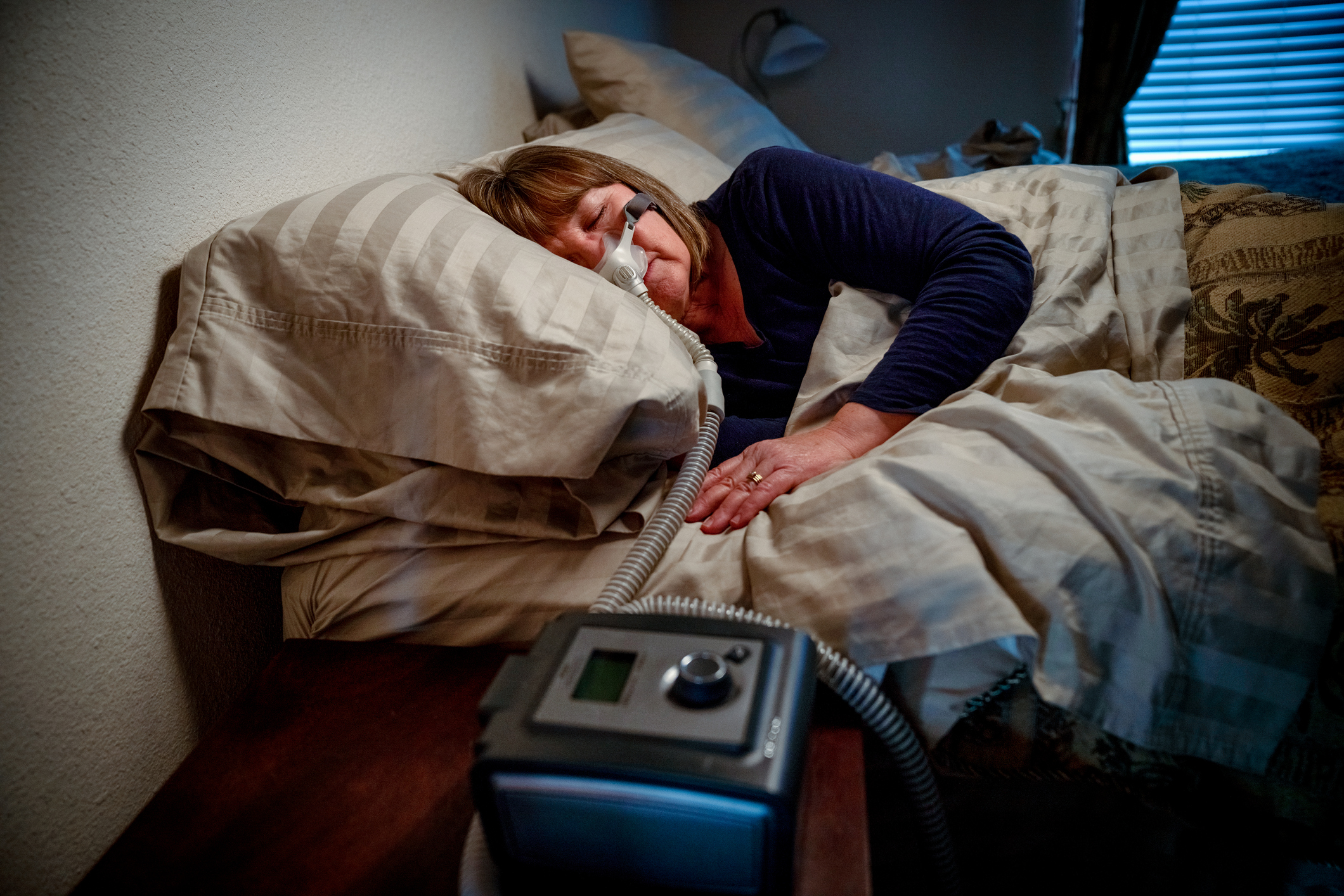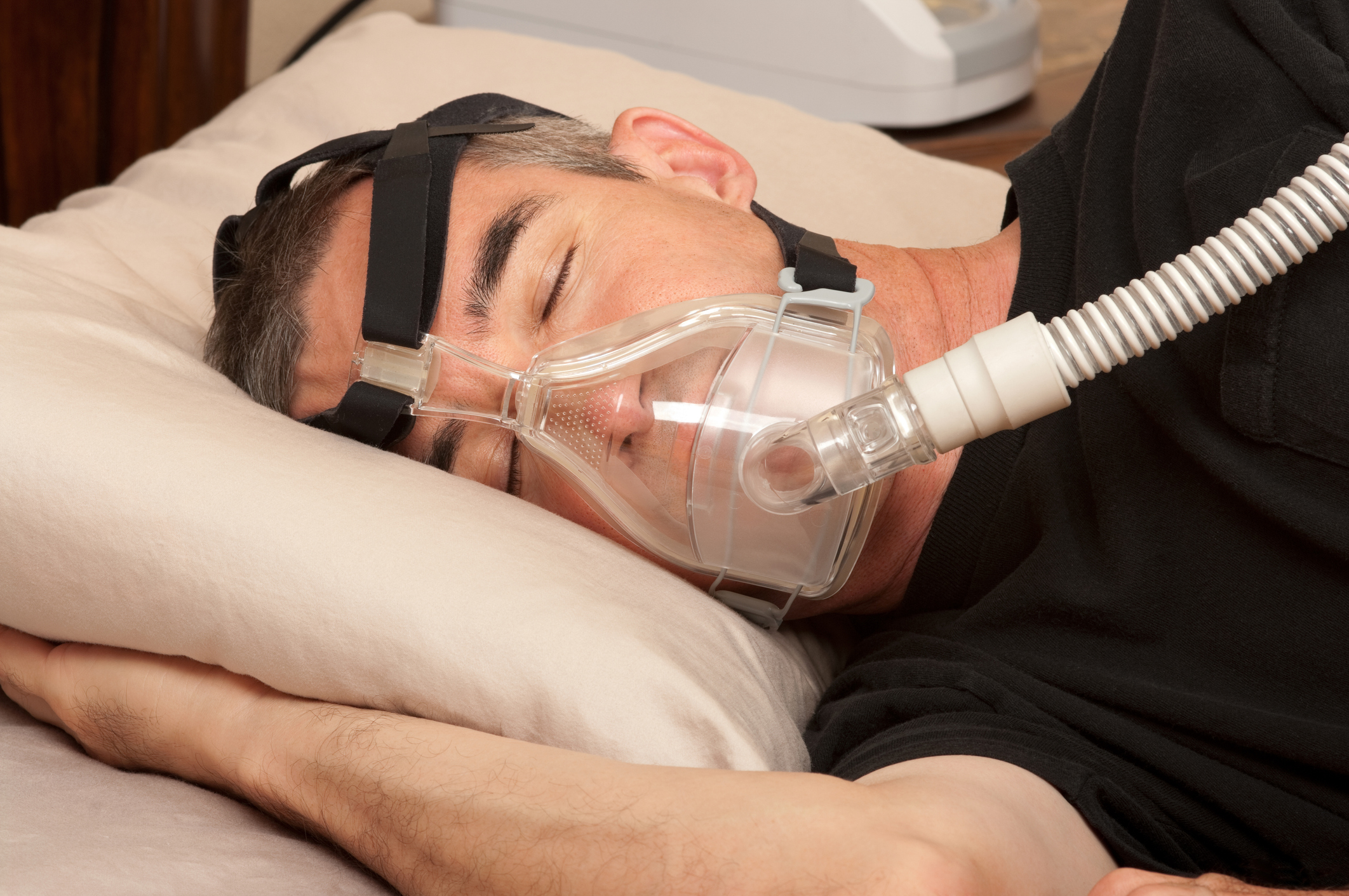What is a CPAP machine?

Recall of Philips machines
Philips has reported an issue with their Bi-Level Positive Airway Pressure (Bi-Level PAP), Continuous Positive Airway Pressure (CPAP), and mechanical ventilator devices.
Philips are recalling and repairing all affected devices. It’s estimated there are 5,000 devices in use in the UK. Everyone affected will be contacted by the NHS or by Philips directly.
The team looking after you should be in touch to discuss the next steps. Do not stop or change your treatment until you have spoken to your clinician.
The CPAP machine components
The CPAP machine blows air under pressure through a mask and makes a low noise that you (and your partner if you have one) will need to get used to. It uses ordinary room air and is powered from an ordinary power supply. It should last about seven years.
The air pressure
You will not be able to adjust the air pressure once the clinic has set it. Some machines have a ‘ramp’ feature that gradually increases pressure until it reaches your pre-set pressure over the first few minutes. The ramp feature may help you get used to it the pressure.
It’s normal to feel it’s harder to breathe out. Once you’re asleep, your body will get used to this, but it may take time.
The mask
CPAP masks come in many shapes and sizes:
- masks that fit over your nose
- masks that fit over your nose and mouth. These work if you breathe through your mouth when you sleep, have nasal blockage or still snore with a nasal mask
- masks that cover your whole face
- nasal pillows, which fit against your nostrils.
Your clinic should be able to help you find the best mask for you.

Getting a good air seal
The mask has a soft, flexible cushion that rests against your face. Getting this cushion in the right place is important so that it is comfortable, won’t hurt you and makes a good seal with no air leaks. If the mask is too loose or too tight, the seal won’t be effective.
The tubing
The flexible tubing carries air from the machine to your mask. It may be more comfortable if you run the tubing above and behind your head. Changing the position of the machine can also help you to find a comfortable place for the tubing.
Humidifiers
Some people find their CPAP more comfortable if it has a humidifier to moisten and warm the air from the machine. Some clinics issue humidifiers as standard, but others issue them only if you find the air uncomfortably cold and dry.
Looking after your CPAP machine
Your CPAP machine should come with instructions about how to use it, keeping the components clean, and washing or changing the filters. Always follow the manufacturer’s instructions.
Before you leave the clinic with your CPAP machine, it’s important to get clear instructions on how to fit the mask, use the machine and keep the equipment clean. It’s vital you use the CPAP properly or the treatment won’t be effective. If you’re unsure about anything, ask the sleep clinic or call our helpline on 0300 222 5800
Getting used to CPAP
Some people wake up the first morning after CPAP and feel much better immediately, while others find it takes longer.
CPAP can feel odd to start with especially if you aren’t used to sleeping on your back, and you may be tempted to stop using it. But people who stick with it soon find their symptoms improve significantly – within a week of using it consistently. About a third of people we asked said it had taken over six months to get used to it. But almost everyone said it was the best treatment for them.
Research indicates that the longer you use it each night - the more you benefit. Try to use it every night, especially at the beginning of the night, when we tend to sleep most deeply. If you’re having problems, ask your sleep clinic for help.
You should have an initial consultation within 1 month of starting your CPAP treatment, to check how it’s going, the effectiveness of the treatment and to see if you need any support. Many people now have telemonitoring with their CPAP device so that the effectiveness of CPAP can be checked, and the pressure changed remotely if needed. The telemonitoring sends data to your sleep centre on breathing pauses, leaks from the mask and your use of the CPAP device each night. Once your CPAP treatment is optimised, you should have an annual review.
How CPAP can treat OSA - Kath's story
“Today I feel healthier than I did 20 years before my diagnosis”
Kath describes how CPAP treatment has made a difference to her life. It spurred her to set up Hope2Sleep to help others use CPAP successfully too.
I was confident my sleep test would prove I didn’t have OSA. It turned out I had moderate to severe OSA, averaging 30 apnoeas an hour.
Yes, I knew I was a snorer, and yes, I was always tired. But I put that down to being a busy music teacher and just allowed myself the odd nap when I could fit one in. I certainly wasn’t overweight.
My diagnosis was a relief. It explained why I would practically collapse with exhaustion every now and then. More importantly, I was told I could enjoy a much better quality of life with CPAP treatment.
I was excited the day I brought my CPAP machine home. I’d heard the stories of overnight cures. Well that didn’t happen. The truth is that most people have to persevere to get the comfortable night’s sleep we deserve.
I was determined to make it work. Today I feel healthier than I did in the 20 years before my diagnosis and CPAP has become my best friend.”




